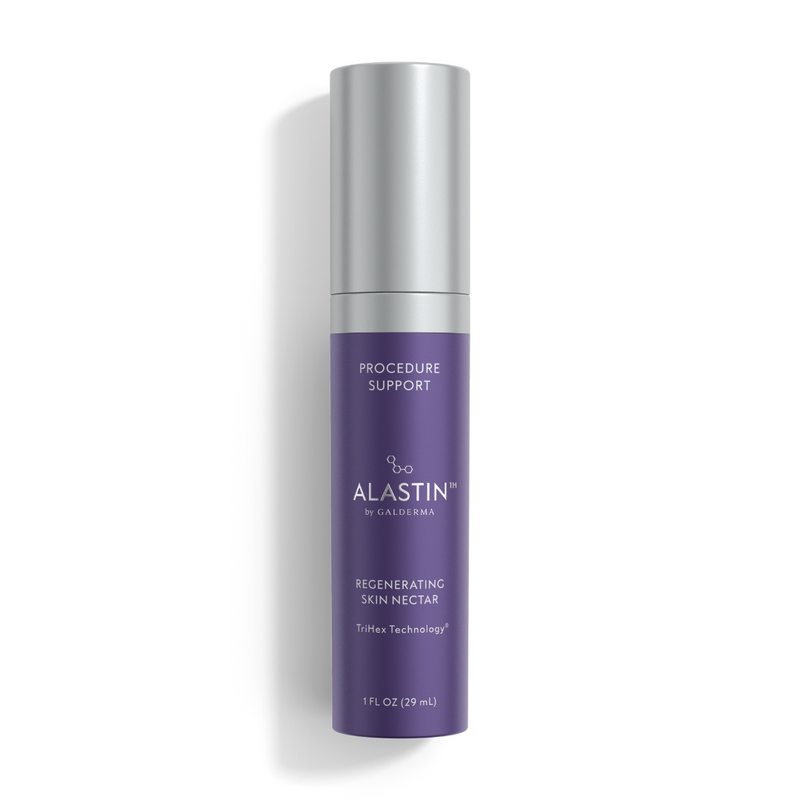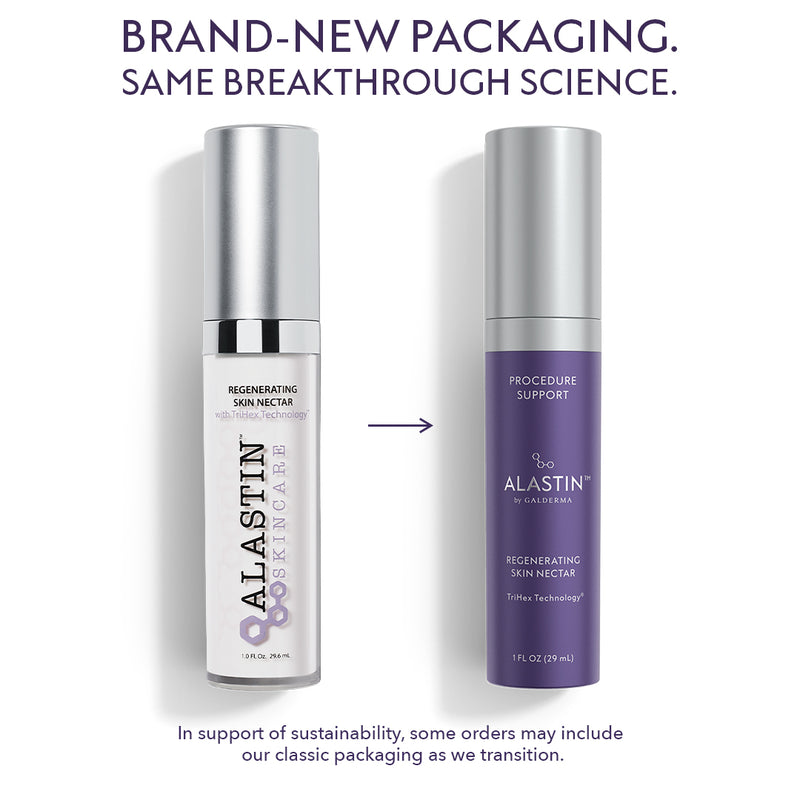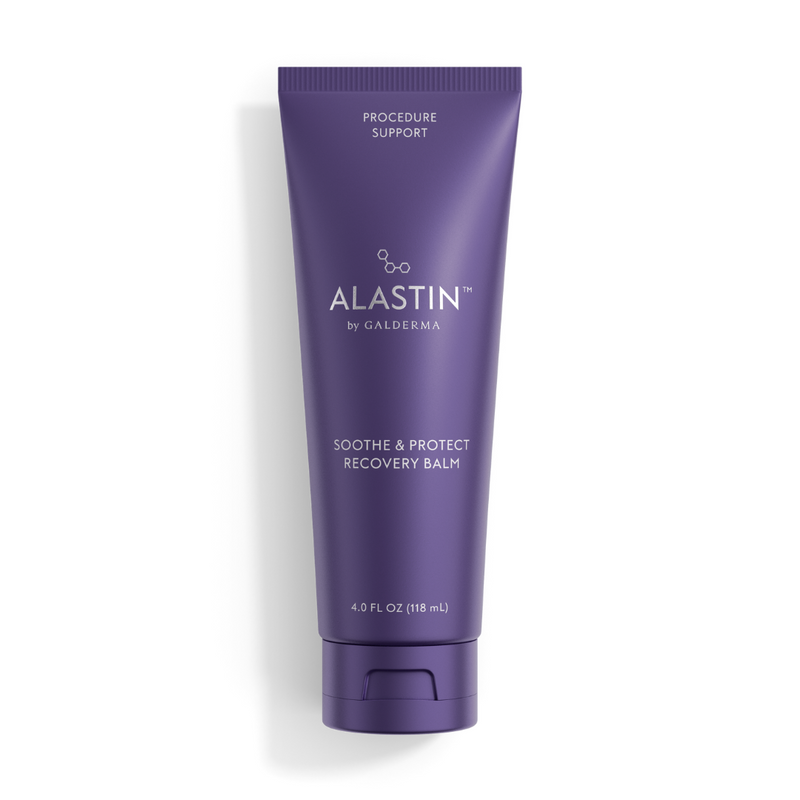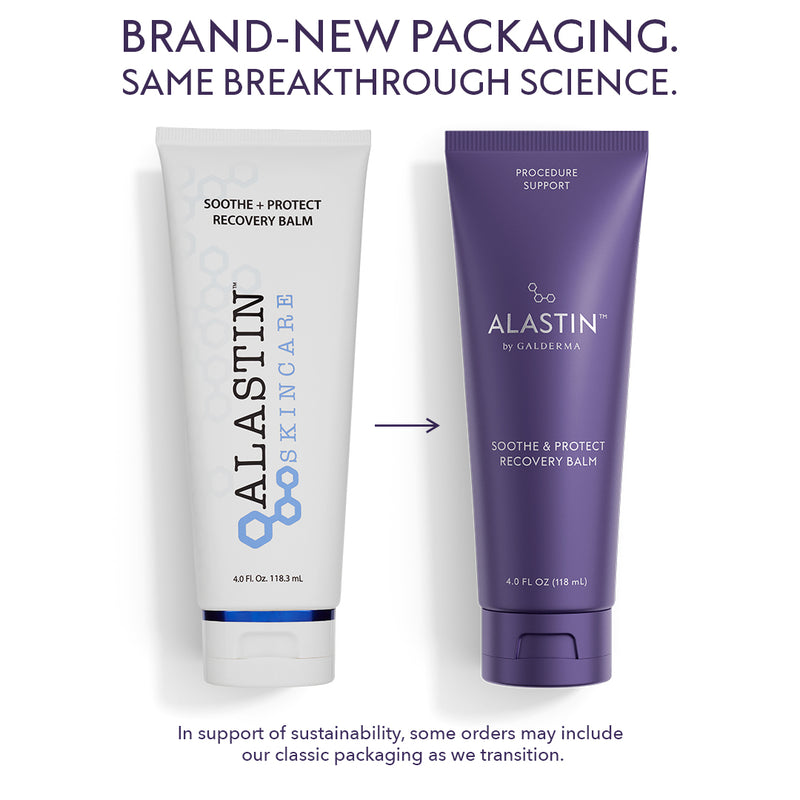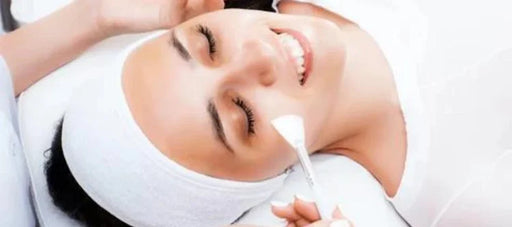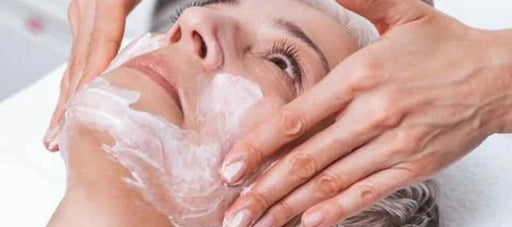You have no items in your bag
Understanding Different Types of Chemical Peels
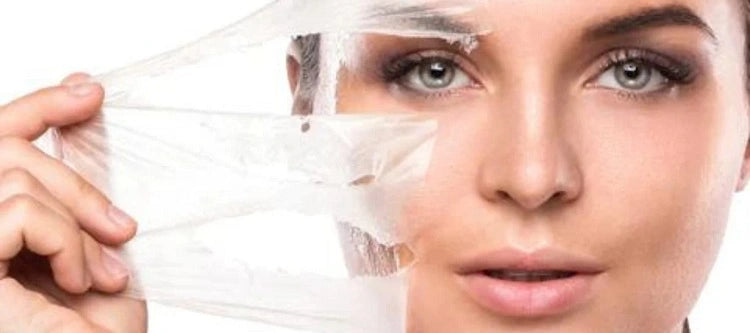
Everyone loves having healthy and happy skin. It can make you feel more confident, optimistic, polished, and ready to take on your day. Thanks to chemical peels, a bright and youthful complexion might be more accessible and affordable than you think. Did you know that chemical peels are the third most common cosmetic procedure in the U.S. after Botox and fillers?2
Aging skin regenerates less efficiently than younger skin, partially due to the slowed production of elastin and collagen. In fact, the collagen content of your skin decreases by about 1% each year1. This may sound scary, but with the right skincare approach, you can support your body in producing new collagen and elastin.
So what is a chemical peel and what does a chemical peel do?
By fostering the regeneration process, chemical peels can help boost collagen and elastin, improve elasticity, even out skin tone and reduce the appearance of fine lines. Chemical peels are non-invasive and you'll often see early improvements such as tighter feeling skin and a brighter complexion.
With lighter to medium peels, periodic repeat treatments are recommended for optimal results.
With that said, there are several different types of chemical peels, some of which are better suited for certain skin types and conditions. Find a breakdown of each below.
What Are The Different Types of Chemical Peels?
A chemical peel consists of an exfoliating acid solution (acids that are naturally derived and gentle on the skin) ultimately designed to enhance the skin's appearance. The exfoliation process works to remove dead skin cells, which can brighten and smooth your complexion, reducing visible signs of aging. Aside from various acid solutions, the different types of chemical peels fall into three categories: superficial, medium and deep.
Superficial Chemical Peels
A superficial chemical peel (or light chemical peel) is the mildest option, targeting the outer layer of the skin (epidermis). It can help minimize the appearance of pores and wrinkles, improve uneven skin tone and reduce dark spots.
This type of skin peel typically uses alpha hydroxy acids such as glycolic, salicylic, lactic, malic, kojic or a combination of these acids. However, enzymes can also be used to penetrate the outer layer of skin.
Though superficial peels are generally gentle on the skin, you might notice some redness shortly after and potentially some minimal flaking. A medical-grade light peel will usually heal within one to seven days, but you can most likely wear makeup the next day3.
Medium Chemical Peels
A medium chemical peel is a step up from a superficial peel in that it gets into the middle layers of the skin. Medium-depth peels usually have a relatively high concentration of glycolic, lactic, salicylic, or trichloroacetic acid (TCA). After getting a medium peel, you can expect some redness afterward. Medium chemical peels take one to two weeks to heal3.
Deep Chemical Peels
Deep chemical peels are the most intense, penetrating the deeper layers of your skin. They're used to treat more serious skin issues, like acne or severe sun damage. The most common acids used in a deep chemical peel are glycolic acid, trichloroacetic acid and phenol.
With a higher concentration of acids, most people have red skin following deep chemical peels. This type of peel usually takes two to three weeks to heal3. Since deep peels can cause hypopigmentation (skin lightening), they may not be the best choice for darker skin tones2.
5 Different Chemical Peels
So, what is the best chemical peel for your skin? This depends on your skin condition, sensitivities and what you're looking to achieve. The five most common chemical peels are glycolic, lactic, beta, vitalize and pigment-balancing peels.
#1 Glycolic Chemical Peel
When it comes to chemical peels, glycolic acid is the shining star. The AHA (alpha hydroxy acid) is derived from fruit, and with a small molecular structure, it can penetrate deep into your skin. Without any abrasion, glycolic acid essentially dissolves dead skin cells and sebum in your pores. Glycolic peels are available in various intensities, ranging from superficial to deep. After using a glycolic acid peel, many people notice smoother, younger-looking skin and a healthy glow.
#2 Lactic Chemical Peel
Lactic acid is another AHA commonly used in chemical peels. The organic compound is found in fermented milk products, but with skincare products, it's usually derived from sugar or vegetable sources. By breaking up the dead cells on your epidermis, lactic acid exfoliates your skin, making room for newly regenerated cells4.
Lactic chemical peels tend to be more tolerable on sensitive skin than other acids. Lactic acid can also boost the skin's natural moisture factor, helping to keep it hydrated and plump. If you incorporate a lactic peel into your skincare regimen, you may experience refined skin texture, a brighter complexion, less prominent fine lines and clearer skin.
#3 Beta Chemical Peel
Beta chemical peels contain salicylic acid, a beta-hydroxy acid (BHA) derived from willow bark. This naturally antimicrobial ingredient is known for its ability to exfoliate, control oil and reduce inflammation. A BHA chemical peel can help with breakouts and clogged pores, as the oil-soluble compound addresses sebum and acne-causing bacteria5.
Thanks to the anti-inflammatory properties of salicylic acid, BHA peels are generally less irritating than AHA peels. However, everyone's skin is different, so it's best to chat with your dermatologist or skin professional before getting a treatment.
#4 Vitalize Chemical Peel
By definition, 'revitalization' involves giving something new life. Similarly, 'vitalization' is about providing strength and energy. A vitalize chemical peel may diminish the look of wrinkles and scars, reduce dark spots, smooth out rough skin patches and brighten the complexion. This type of chemical peel typically combines salicylic acid, lactic acid, citric acid and sometimes retinoic acid (retinol).
Like lactic and beta peels, a vitalize peel is somewhat gentle compared to other options. If you're new to the world of peels and chemical exfoliation, it can be an excellent introduction. Not only is it easy on the skin, but vitalize chemical exfoliation is also associated with minimal peeling. Many people see improved skin tone after one treatment and even better results with regular vitalize peels.
#5 Pigment-Balancing Chemical Peel
Similar to vitalize peels, pigment-balancing chemical peels combine multiple AHAs and BHAs. They're primarily used to target hyperpigmentation (darkening of the skin) and Melasma (discoloration), helping to even out skin tone and minimize brown spots. A pigment-balancing peel can also help reduce the look of acne scars and fine lines.
Keep in mind that with a pigment-balancing peel, you might need to use it several times before seeing any change in your skin. You may notice a balanced skin tone and a smoother complexion first, with a reduction in age spots over time. Since sun damage can worsen hyperpigmentation, wearing sunscreen every day is crucial.
Making the Most of Your Chemical Peel
A medical-grade chemical peel can do wonders for your complexion. For best results, you'll want to prepare your skin before getting a treatment. Leading up to your appointment, using high-quality products that can make your skin more receptive to the procedure and support the recovery process is very important. Our non-irritating Gentle Cleanser and calming Ultra Nourishing Moisturizer with TriHex Technology® are great picks.
Using Regenerating Skin Nectar with TriHex Technology® before a deeper peel can prep the skin barrier and help optimize the results of treated skin. Our patented TriHex Technology® helps support the process of removing old collagen and elastin, rebuilding healthy cells and replenishing regenerated skin.
To make the most of a clinical treatment, we recommend implementing an at-home daily skincare routine. Think of it like seeing the dentist twice a year and maintaining healthy teeth by brushing and flossing in between. Adding our Restorative Skin Complex with TriHex Technology® to your skincare routine helps maintain skin health with volumizing and lifting ingredients to help combat the visible signs of aging. It's an excellent product to use after getting a chemical peel.
All types of chemical peels can make your skin more sensitive to sunlight, so you consider wearing tinted sunscreen. Tinted sunscreen is not only helpful after a treatment to help cover pink skin, but also on an ongoing basis for even, glowing skin.
Chemical Peel Benefits for Your Skin Type
A chemical peel benefits a wide variety of skin types:
Oily or Acne-Prone Skin
You may have a bit of a love-hate relationship with your skin if it's oily. On one hand, you have a built-in hydration mechanism, but on the other hand, acne might be living on your skin like it pays rent.
The best kind of peels for oily skin and acne often contain beta-hydroxy acid (BHA) or lipohydroxy acid (LHA). Superficial peels that utilize these acids have been shown in studies to reduce mild acne through regular sessions.5
Here’s why: BHA and LHA are both lipophilic, which means they are attracted to oil. Acne is caused by the buildup of oil (a.k.a. sebum) and dead skin cells in the skin.6 So, peels containing BHA or LHA can dissolve built-up oil and reduce acne.
Glycolic acid, an alpha-hydroxy acid (AHA), has also been shown to help diminish acne, but not as effectively as BHA or LHA.
Acne Scarring
If you have mild to moderate acne scarring that has overstayed its welcome, superficial salicylic acid (which is a BHA), glycolic acid, LHA, and trichloroacetic acid (TCA) peels can be used alongside a retinoid or an AHA product as treatment.
If your acne scarring is more severe, a medium or deep phenol peel can be used as treatment.
Sun Damage
Sun damage, also known as photodamage, is caused by prolonged exposure to the sun’s UV rays. You’re susceptible to this kind of skin damage if you’re regularly exposed to the sun without sunscreen.
Photodamage can cause irregular pigmentation, loss of elasticity, wrinkling, and rough skin. A wide range of chemical peels can be used to treat this including AHA, salicylic acid, and TCA, depending on the severity of the damage.
LHA appears to be especially effective at reducing fine lines, wrinkles, and hyperpigmentation, according to clinical studies. Another bonus to using an LHA peel is that while AHA increases sensitivity to UV rays, LHA may actually increase resistance to UV rays.7
Peel or no peel, always wear sunscreen, 365 days a year until the sun goes down.
Melasma
Melasma is caused by an overproduction of melanin (the skin’s natural pigment), and it shows up on the skin as irregular dark or gray patches. It commonly happens on the chin, forehead, cheeks, bridge of the nose, and above the upper lip.

The challenge with treating melasma is that the overproduction of melanin could be happening at various levels of the skin’s surface. Your dermatologist can determine the depth of your melasma and treat you accordingly. Most superficial melasma responds well to peels.
Glycolic acid is currently the most popular kind of peel for treating melasma. For deeper melasma, medium depth glycolic acid peels, alongside other prescribed topical treatments are the most effective combination.8
Wrinkles
Chemical peels are all about revealing new, rejuvenated skin, which makes it an attractive option for people who’d rather look as young as they feel. This is usually a job for medium or deep peels, depending on the depth of the wrinkles. TCA and glycolic acid are commonly used.9
Dull Skin
Aging and the buildup of dead skin cells can cause your skin to get gradually duller. This is typically a superficial issue that only needs a superficial peel. Don’t underestimate the power of a “lunchtime peel” to help treat run-of-the-mill dullness.
Dry and Sensitive Skin
Lactic acid peels are generally well-tolerated. If you know you have dry or sensitive skin, or if you’re new to chemical peels, lactic acid is a gentler option than other AHAs.10
Darker Skin
If you have a darker skin tone, be cautious about medium and deep peels because of the risk of hyperpigmentation.11 Your skin professional should be able to tell you what’s best for you.
Is a Medical-Grade Chemical Peel Right for You?
If you want a solution for addressing fine lines, sun damage, collagen loss, slowed elastin production, uneven pigmentation, and other signs of aging, a chemical peel is an excellent option. Aside from anti-aging benefits, chemical exfoliation can help with current breakouts and acne scars while improving the texture and overall appearance of your skin. What's not to love?
Getting clinical chemical peel treatments can help reset your baseline and reveal beautiful skin underneath any damaged skin cells. In between visits, using a medical-grade skincare line, can help with upkeep.
Shop online for our anti-aging skincare products from today or pick them up from select healthcare providers.
External sources:
- https://www.ncbi.nlm.nih.gov/pmc/articles/PMC3583892/
- https://www.ncbi.nlm.nih.gov/pmc/articles/PMC6122508/
- https://www.asds.net/ChemicalPeelsInformation.aspx
- https://www.sciencedirect.com/topics/immunology-and-microbiology/lactic-acid
- https://www.sciencedirect.com/science/article/pii/S0099542808606097
- "Acne - Causes". Nhs.Uk, https://www.nhs.uk/conditions/acne/causes/
- Marta I. Rendon, Beatrice Wang. "Evidence And Considerations In The Application Of Chemical Peels In Skin Disorders And Aesthetic Resurfacing". Pubmed Central (PMC), 2010, https://www.ncbi.nlm.nih.gov/pmc/articles/PMC2921757/#B21
- Ibid
- Grajqevci-Kotori, Merita, and Allma Kocinaj. "Exfoliative Skin-peeling, Benefits from This Procedure and Our Experience." PubMed Central (PMC), www.ncbi.nlm.nih.gov/pmc/articles/PMC4720453/
- Cherney, Kristeen. "Lactic Acid Peel: Benefits, Side Effects, Products, and More." Healthline, 7 Mar. 2019, www.healthline.com/health/beauty-skin-care/lactic-acid-peel#side-effects
- Marta I. Rendon, Beatrice Wang. "Evidence And Considerations In The Application Of Chemical Peels In Skin Disorders And Aesthetic Resurfacing". Pubmed Central (PMC), 2010, https://www.ncbi.nlm.nih.gov/pmc/articles/PMC2921757/#B21
$258.00


